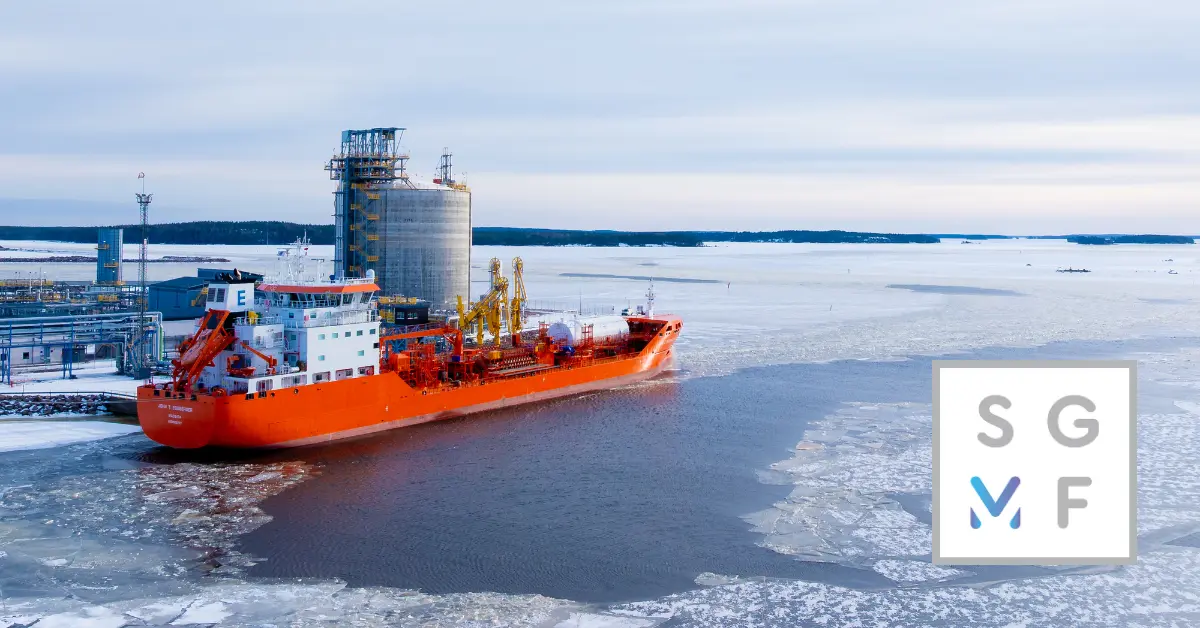Vesa Saarinen,
Head of Technology
+358 50 517 9461
vesa.saarinen@rohe.fi
Emissions from maritime transport are receiving increasing attention in policymaking. Already in 2018, the UN’s International Maritime Organization (IMO) adopted its first climate strategy for the sector. In April 2025, a major step was taken towards implementing that strategy, as the IMO approved the Net-Zero Framework regulatory package. Its ultimate goal is to achieve net-zero emissions in maritime transport by 2050.
The effort to reduce maritime emissions has led to a rapid increase in LNG-powered vessels, which in turn has driven up demand for LNG bunkering services in the Baltic Sea region. To strengthen its bunkering offering, Rohe Solutions joined the Society for Gas as a Marine Fuel (SGMF) at the beginning of the year. This membership gives Rohe access to the latest research on fuel development, bunkering, and international legislation in the maritime sector.
“LNG bunkering can be seen as a megatrend in maritime transport. The SGMF community continually produces research and publishes guidelines and best practices for the industry. This benefits our customers indirectly as well,” emphasizes Head of Technology Vesa Saarinen, highlighting the value of knowledge gained through membership.
As shipping companies invest in LNG vessels, they also create opportunities for the introduction of bio-based marine fuels. Rohe’s Bio-LNG is no longer a distant prospect in the maritime sector – the first Bio-LNG bunkering operations have already been successfully carried out by Rohe.
Bio-LNG Bunkering Now Available at All Major Ports in Finland
Rohe Solutions launched its bunkering business in 2023, and demand has been rising steadily ever since. Thanks to a robust LNG logistics network, Rohe can provide bunkering services at several major ports across Finland.
“Besides the Hamina LNG terminal, Bio-LNG bunkering is already technically feasible at many Finnish ports. The only barriers are demand and the price – or more accurately, the perception of high cost – of renewable fuels,” says Saarinen.
In addition to LNG and Bio-LNG bunkering, Rohe supports ports in preparing for bunkering operations and planning related investments. While the company already has strong in-house expertise in executing bunkering projects, SGMF membership further strengthens its position in advisory and consultation work.
Bunkering Requires Collaboration Across the Industry
Rohe promotes the green transition in the Baltic Sea region by maintaining active dialogue with shipping companies and Finnish ports. For example, Port of Helsinki is aiming to reduce its emissions through its “Carbon-Neutral Port” program. Rohe stays closely involved in conversations around future renewable fuels and helps resolve challenges related to adopting greener alternatives.
Cutting carbon emissions at sea requires cooperation across the maritime ecosystem. Shipping companies, vessels, and ports are already engaged in close collaboration, which enables smooth and efficient bunkering operations. Rohe’s role as a service provider is to take part in these conversations and provide the necessary insights to both current and future customers.
“We have the latest information and top-tier services even for those who are only beginning to consider bunkering. SGMF membership has strengthened our position as we work toward a greener future for maritime transport,” Saarinen concludes.
All news
